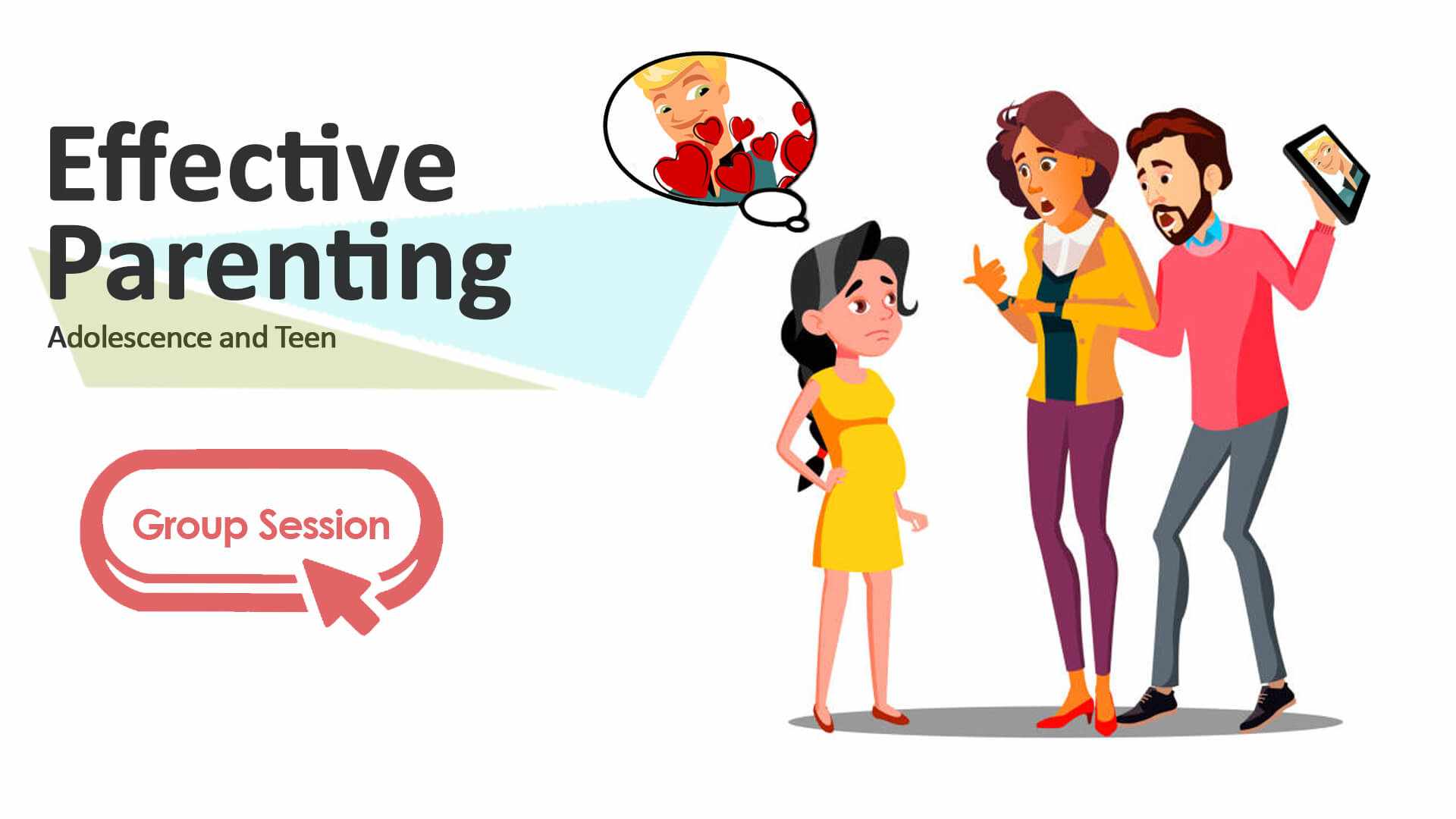The First Two Months, a Guide to Early Care


The First Two Months, a Guide to Early Care
 By Inventive Minds Kidz Academy
By Inventive Minds Kidz Academy
 Added Mon, Feb 03 2025
Added Mon, Feb 03 2025
 By Inventive Minds Kidz Academy
By Inventive Minds Kidz Academy
Added Mon, Feb 03 2025
Hey, Thanks For Subscribing!
Please check for a confirmation message and ensure you add us to a safe email list.
If you don't see a message in the next five minutes, check your spam or junk folders and mark our emails safe for next time.
See you soon!
Duplicate Email Found!
Well this is embarrassing... It looks like is already registered.
We have just sent an email to that address with a link to manage the subscription with us. If you don't see a message in the next five minutes, check the spam or junk folders, it's definitely there.
See you soon!

When it comes to parenting, the first two months of newborns life are both exciting and challenging. This time period is considered as one of the most critical periods of a baby’s life, as it sets the foundation of baby’s overall health and development.
Newborn screening and physical examination, Breastfeeding guidance, Neonatal jaundice and Umbilical Cord care are the most important concerns of parents in this period and thus, they will be discussed comprehensively in separate articles. In this article, we will focus on other essential aspects of newborn care that parents should be aware of.
When you bring your newborn home from the hospital, you might still have many concerns about your baby’s health. You are not yet familiar with what is normal or abnormal, and hospital staff may not have fully educated you on which symptoms require urgent medical attention. For example you might find that your baby has a mild 38.5 Celsius fever. Is it of any importance or it will go away by itself? Should you drive all the way to the hospital (possibly in the middle of the night as your baby wakes you up crying) or you should wait it out?
Or, if your baby vomits twice in a few hours, is it just reflux, or does it require immediate medical help? This guide aims to help parents navigate such concerns during the first two months.
Fever in newborns and how to manage it
One of the common complaints of newborn parents is that their newborn baby feels warm to the touch. When you suspect fever, accurate temperature measurement is crucial for early detection of fever. Usually, a rectal thermometer is recommended for the most reliable readings in infants. To use it safely, lubricate the tip with petroleum jelly and gently insert it about 1.25 cm (0.5 inches) into the baby’s rectum. You can also use thermometers under arm, but this method is often less accurate than rectal measurement. A fever is defined as a rectal temperature of 38°C (100.4°F) or higher. Axillary (underarm) temperature is usually around 0.5 degrees lower, so the Axillary temperature of higher than 37.5 could be concerning.
Nelson textbook of pediatrics emphasizes, "Prompt evaluation of fever in neonates is essential because of the high risk of invasive bacterial infections in this age group." Keep in mind that low temperature fevers are sometimes caused by excessive clothing of newborn or setting the room temperature too high. Current guidelines from the American Academy of Pediatrics (AAP) recommend 20–22°C and newborns should be clothed one layer more than adults. Any higher temperature fever or a low grade fever that does not relate to excessive ambient heat is considered emergent and needs immediate medical attention.
Hepatitis B vaccine and other vaccines that might be administrated at birth, usually don’t cause any significant temperature elevation and even if they do, it’s mild and it’s gone during the first 24-48 hours, this is usually before the time of discharge from hospital. The use of anti-fever drugs such as acetaminophen is not recommended in this population as they can subside the fever and delay the diagnosis of severe illnesses, unless only under medical guidance as Infectious diseases progress very rapidly in this age group.
Coughing, sneezing and other respiratory symptoms
Sneezing a couple of times per day is usually considered normal and helps clear nasal passage, but coughing on the other hand may have medical significance and could possibly be an alarm sign for respiratory illnesses. Although occasional cough may not always be serious, a coughing that is persistent or is accompanied by rapid breathing, grunting, flaring nostrils, or bluish discoloration around the lips is severe and needs immediate medical attention.
According to Nelson, "respiratory distress in neonates often presents subtly and may progress rapidly, necessitating early recognition and intervention."
Conditions in skin and eyes
The most common condition in this category would be yellowish discoloration of skin and white part (sclera) of the eye. This is a sign of neonatal jaundice and as we mentioned before because of its significance and medical importance, it will be discussed later in another article. Taking care of umbilical cord and symptoms of umbilical cord infection will also be discussed in its own article.
There could be many skin conditions that a newborn my manifest. Some are considered dangerous and alarming, but many are benign and part of normal newborn development. Erythema toxicum neonatorum, characterized by red spots with tiny white or yellow centers, is common within the first week of life and resolves without treatment. As Nelson states, "Erythema toxicum neonatorum is a self-limiting rash seen in up to 50% of term newborns and requires no specific therapy." Milia, small white bumps often seen on the nose, chin, or cheeks, are also harmless and disappear on their own. Mongolian spots, bluish-gray patches typically found on the lower back or buttocks, are common in darker-skinned infants and pose no health risk. Peeling skin is another benign condition frequently observed in post-term babies as they shed their outer skin layer.
Some serious skin conditions in newborns include:
- Pustular rashes or blisters: These could be signs of infections like staphylococcal scalded skin syndrome or herpes simplex virus.
- Large red, swollen areas: This could indicate cellulitis, a bacterial infection needing urgent treatment.
- Petechiae (tiny red or purple spots): These can be signs of a blood clotting disorder or serious infection.
Any persistent redness, swelling, or pus-like discharge from the eyes is suggestive of conjunctivitis and necessitates prompt medical evaluation.
Basics of diapering and understanding normal patterns
Proper diapering practices and understanding normal urinary and bowel patterns are essential aspects of newborn care. If you have no experience with diapering a baby, visual media, for example on YouTube, might be of better help. But when it comes to what actually is in the diaper, we will discuss it here.
Newborns are not usually discharged before passing the first stool and urine. On day 1, babies may only have 1 wet diaper, but after the first week Newborns typically have six to eight wet diapers per day indicating adequate hydration. In the first few days, newborns pass meconium, a dark, sticky stool. By day 4–5, the stools transition to yellow and seedy in breastfed infants and may be firmer in formula-fed babies. Stool consistency and color can vary, ranging from yellow and seedy to green or brown. Breastfed babies may pass stool several times per day or as little as once every few days. Formula-fed babies tend to have one or more stools daily, which are firmer than breastfed stool. Abnormal stool is defined both by quantity and consistency of stool. Diarrhea is defined as Watery and very frequent stools may indicate an infection or lactose intolerance and need medical attention. Having Hard, pellet-like stools, straining, or fewer than 3 stools per week a formula-fed baby is considered constipation and should be evaluated by a doctor.
It is normal for female newborns to have mild vaginal bleeding or a white discharge during the first few days due to maternal hormone withdrawal. This often resolves without intervention and have no medical significance. Nelson states, "Pseudo menstruation in newborn girls is a benign condition resulting from withdrawal of maternal estrogens and requires no treatment." Constipation, characterized by hard stools or infrequent bowel movements, can often be relieved with gentle tummy massages or bicycling the baby’s legs to stimulate bowel activity.
Baby’s sleep and crying pattern
Newborn sleep is very different from that of older children and adults. Newborns sleep 14–17 hours per day, typically in cycles of 2–4 hours at a time. They do not develop a regular day-night sleep pattern until around 2–3 months.
Parents should ensure that the baby sleeps on their back, on a firm mattress, with no loose blankets or pillows, to reduce the risk of sudden infant death syndrome (SIDS). SIDS will be discussed in a different article.
Crying is a primary mode of communication for newborns, but excessive crying can be distressing for both the baby and the parents. If your baby is crying extensively you should check for if baby needs feeding, whether the baby has fever and any sign of infection. Baby’s often have hard times as they pass stool, so they might need your help with massaging their bellies gently. Also check for room temperature as their small bodies are more influenced by room temperature compared to adults. If everything seems safe and sound, your newborn might have a condition called colic. Colic is defined as crying for more than three hours a day, more than three days a week, for over three weeks. This definition is known in the medical community as Wessel’s rule of threes. Colic is common and typically resolves by four months of age. According to Nelson, "Colic is a self-limited condition characterized by periods of inconsolable crying without an identifiable cause, usually peaking around six weeks of age." While colic is not harmful, it can be exhausting for caregivers. Comforting techniques such as swaddling, gentle rocking, using white noise, or offering a pacifier can help soothe a fussy baby.
You should seek medical advice if the crying is high-pitched, accompanied by fever, poor feeding, lethargy, or signs of illness, as these could indicate underlying medical issues requiring prompt attention.
Normal vs. Abnormal Regurgitation and Vomiting
Understanding the differences between normal regurgitation, common in healthy infants, and concerning vomiting is crucial. Small amounts of milk spit-up after feeding are normal due to immature digestive systems. However, forceful vomiting, green bile-stained vomit, or the presence of blood are red flags that necessitate immediate medical evaluation, as they could signal gastrointestinal obstructions or other serious conditions. Nelson highlights, "Bilious vomiting in neonates should be considered a surgical emergency until proven otherwise due to the risk of conditions like malrotation with volvulus."
As our final words, Routine pediatric checkups play a vital role in monitoring a newborn’s growth, development, and overall health. The first checkup should occur within three to five days after birth, followed by subsequent visits at one month and two months. These well-baby visits include growth measurements, developmental screenings, immunizations, and guidance on feeding, sleep, and safety. Nelson emphasizes, "Well-child visits in the neonatal period provide an opportunity to monitor growth, assess development, and offer anticipatory guidance to families." Regular checkups allow healthcare providers to detect potential health issues early and provide timely interventions.
Authored by:
Dr. Alireza Sarmadi
Family Physician
References
- Kliegman, R. M., Stanton, B. F., St Geme, J. W., & Schor, N. F. (Eds.). (2020). Nelson Textbook of Pediatrics (21st ed.). Elsevier.
- Up-to-date. (2023). Fever in neonates: Clinical evaluation and management.
- American Academy of Pediatrics (AAP). (2022). Safe Sleep Guidelines for Infants.
- World Health Organization (WHO). (2023). Early Essential Newborn Care Guidelines.
- Centers for Disease Control and Prevention (CDC). (2023). Newborn Care and Developmental Milestones.
- American College of Obstetricians and Gynecologists (ACOG). (2023). Postpartum and Neonatal Care Guidelines.
When it comes to parenting, the first two months of newborns life are both exciting and challenging. This time period is considered as one of the most critical periods of a baby’s life, as it sets the foundation of baby’s overall health and development.
Newborn screening and physical examination, Breastfeeding guidance, Neonatal jaundice and Umbilical Cord care are the most important concerns of parents in this period and thus, they will be discussed comprehensively in separate articles. In this article, we will focus on other essential aspects of newborn care that parents should be aware of.
When you bring your newborn home from the hospital, you might still have many concerns about your baby’s health. You are not yet familiar with what is normal or abnormal, and hospital staff may not have fully educated you on which symptoms require urgent medical attention. For example you might find that your baby has a mild 38.5 Celsius fever. Is it of any importance or it will go away by itself? Should you drive all the way to the hospital (possibly in the middle of the night as your baby wakes you up crying) or you should wait it out?
Or, if your baby vomits twice in a few hours, is it just reflux, or does it require immediate medical help? This guide aims to help parents navigate such concerns during the first two months.
Fever in newborns and how to manage it
One of the common complaints of newborn parents is that their newborn baby feels warm to the touch. When you suspect fever, accurate temperature measurement is crucial for early detection of fever. Usually, a rectal thermometer is recommended for the most reliable readings in infants. To use it safely, lubricate the tip with petroleum jelly and gently insert it about 1.25 cm (0.5 inches) into the baby’s rectum. You can also use thermometers under arm, but this method is often less accurate than rectal measurement. A fever is defined as a rectal temperature of 38°C (100.4°F) or higher. Axillary (underarm) temperature is usually around 0.5 degrees lower, so the Axillary temperature of higher than 37.5 could be concerning.
Nelson textbook of pediatrics emphasizes, "Prompt evaluation of fever in neonates is essential because of the high risk of invasive bacterial infections in this age group." Keep in mind that low temperature fevers are sometimes caused by excessive clothing of newborn or setting the room temperature too high. Current guidelines from the American Academy of Pediatrics (AAP) recommend 20–22°C and newborns should be clothed one layer more than adults. Any higher temperature fever or a low grade fever that does not relate to excessive ambient heat is considered emergent and needs immediate medical attention.
Hepatitis B vaccine and other vaccines that might be administrated at birth, usually don’t cause any significant temperature elevation and even if they do, it’s mild and it’s gone during the first 24-48 hours, this is usually before the time of discharge from hospital. The use of anti-fever drugs such as acetaminophen is not recommended in this population as they can subside the fever and delay the diagnosis of severe illnesses, unless only under medical guidance as Infectious diseases progress very rapidly in this age group.
Coughing, sneezing and other respiratory symptoms
Sneezing a couple of times per day is usually considered normal and helps clear nasal passage, but coughing on the other hand may have medical significance and could possibly be an alarm sign for respiratory illnesses. Although occasional cough may not always be serious, a coughing that is persistent or is accompanied by rapid breathing, grunting, flaring nostrils, or bluish discoloration around the lips is severe and needs immediate medical attention.
According to Nelson, "respiratory distress in neonates often presents subtly and may progress rapidly, necessitating early recognition and intervention."
Conditions in skin and eyes
The most common condition in this category would be yellowish discoloration of skin and white part (sclera) of the eye. This is a sign of neonatal jaundice and as we mentioned before because of its significance and medical importance, it will be discussed later in another article. Taking care of umbilical cord and symptoms of umbilical cord infection will also be discussed in its own article.
There could be many skin conditions that a newborn my manifest. Some are considered dangerous and alarming, but many are benign and part of normal newborn development. Erythema toxicum neonatorum, characterized by red spots with tiny white or yellow centers, is common within the first week of life and resolves without treatment. As Nelson states, "Erythema toxicum neonatorum is a self-limiting rash seen in up to 50% of term newborns and requires no specific therapy." Milia, small white bumps often seen on the nose, chin, or cheeks, are also harmless and disappear on their own. Mongolian spots, bluish-gray patches typically found on the lower back or buttocks, are common in darker-skinned infants and pose no health risk. Peeling skin is another benign condition frequently observed in post-term babies as they shed their outer skin layer.
Some serious skin conditions in newborns include:
- Pustular rashes or blisters: These could be signs of infections like staphylococcal scalded skin syndrome or herpes simplex virus.
- Large red, swollen areas: This could indicate cellulitis, a bacterial infection needing urgent treatment.
- Petechiae (tiny red or purple spots): These can be signs of a blood clotting disorder or serious infection.
Any persistent redness, swelling, or pus-like discharge from the eyes is suggestive of conjunctivitis and necessitates prompt medical evaluation.
Basics of diapering and understanding normal patterns
Proper diapering practices and understanding normal urinary and bowel patterns are essential aspects of newborn care. If you have no experience with diapering a baby, visual media, for example on YouTube, might be of better help. But when it comes to what actually is in the diaper, we will discuss it here.
Newborns are not usually discharged before passing the first stool and urine. On day 1, babies may only have 1 wet diaper, but after the first week Newborns typically have six to eight wet diapers per day indicating adequate hydration. In the first few days, newborns pass meconium, a dark, sticky stool. By day 4–5, the stools transition to yellow and seedy in breastfed infants and may be firmer in formula-fed babies. Stool consistency and color can vary, ranging from yellow and seedy to green or brown. Breastfed babies may pass stool several times per day or as little as once every few days. Formula-fed babies tend to have one or more stools daily, which are firmer than breastfed stool. Abnormal stool is defined both by quantity and consistency of stool. Diarrhea is defined as Watery and very frequent stools may indicate an infection or lactose intolerance and need medical attention. Having Hard, pellet-like stools, straining, or fewer than 3 stools per week a formula-fed baby is considered constipation and should be evaluated by a doctor.
It is normal for female newborns to have mild vaginal bleeding or a white discharge during the first few days due to maternal hormone withdrawal. This often resolves without intervention and have no medical significance. Nelson states, "Pseudo menstruation in newborn girls is a benign condition resulting from withdrawal of maternal estrogens and requires no treatment." Constipation, characterized by hard stools or infrequent bowel movements, can often be relieved with gentle tummy massages or bicycling the baby’s legs to stimulate bowel activity.
Baby’s sleep and crying pattern
Newborn sleep is very different from that of older children and adults. Newborns sleep 14–17 hours per day, typically in cycles of 2–4 hours at a time. They do not develop a regular day-night sleep pattern until around 2–3 months.
Parents should ensure that the baby sleeps on their back, on a firm mattress, with no loose blankets or pillows, to reduce the risk of sudden infant death syndrome (SIDS). SIDS will be discussed in a different article.
Crying is a primary mode of communication for newborns, but excessive crying can be distressing for both the baby and the parents. If your baby is crying extensively you should check for if baby needs feeding, whether the baby has fever and any sign of infection. Baby’s often have hard times as they pass stool, so they might need your help with massaging their bellies gently. Also check for room temperature as their small bodies are more influenced by room temperature compared to adults. If everything seems safe and sound, your newborn might have a condition called colic. Colic is defined as crying for more than three hours a day, more than three days a week, for over three weeks. This definition is known in the medical community as Wessel’s rule of threes. Colic is common and typically resolves by four months of age. According to Nelson, "Colic is a self-limited condition characterized by periods of inconsolable crying without an identifiable cause, usually peaking around six weeks of age." While colic is not harmful, it can be exhausting for caregivers. Comforting techniques such as swaddling, gentle rocking, using white noise, or offering a pacifier can help soothe a fussy baby.
You should seek medical advice if the crying is high-pitched, accompanied by fever, poor feeding, lethargy, or signs of illness, as these could indicate underlying medical issues requiring prompt attention.
Normal vs. Abnormal Regurgitation and Vomiting
Understanding the differences between normal regurgitation, common in healthy infants, and concerning vomiting is crucial. Small amounts of milk spit-up after feeding are normal due to immature digestive systems. However, forceful vomiting, green bile-stained vomit, or the presence of blood are red flags that necessitate immediate medical evaluation, as they could signal gastrointestinal obstructions or other serious conditions. Nelson highlights, "Bilious vomiting in neonates should be considered a surgical emergency until proven otherwise due to the risk of conditions like malrotation with volvulus."
As our final words, Routine pediatric checkups play a vital role in monitoring a newborn’s growth, development, and overall health. The first checkup should occur within three to five days after birth, followed by subsequent visits at one month and two months. These well-baby visits include growth measurements, developmental screenings, immunizations, and guidance on feeding, sleep, and safety. Nelson emphasizes, "Well-child visits in the neonatal period provide an opportunity to monitor growth, assess development, and offer anticipatory guidance to families." Regular checkups allow healthcare providers to detect potential health issues early and provide timely interventions.
Authored by:
Dr. Alireza Sarmadi
Family Physician
References
- Kliegman, R. M., Stanton, B. F., St Geme, J. W., & Schor, N. F. (Eds.). (2020). Nelson Textbook of Pediatrics (21st ed.). Elsevier.
- Up-to-date. (2023). Fever in neonates: Clinical evaluation and management.
- American Academy of Pediatrics (AAP). (2022). Safe Sleep Guidelines for Infants.
- World Health Organization (WHO). (2023). Early Essential Newborn Care Guidelines.
- Centers for Disease Control and Prevention (CDC). (2023). Newborn Care and Developmental Milestones.
- American College of Obstetricians and Gynecologists (ACOG). (2023). Postpartum and Neonatal Care Guidelines.
Most Talked About Posts
You May Also Like
Staff Picks
Now Trending
Our Newsletter
Duplicate Email Found!
Well this is embarrassing... It looks like is already registered.
We have just sent an email to that address with a link to manage the subscription with us. If you don't see a message in the next five minutes, check the spam or junk folders, it's definitely there.
See you soon!
Join Our Newsletter
Hey, Thanks For Subscribing!
Please check for a confirmation message and ensure you add us to a safe email list.
If you don't see a message in the next five minutes, check your spam or junk folders and mark our emails safe for next time.
See you soon!
Duplicate Email Found!
Well this is embarrassing... It looks like is already registered.
We have just sent an email to that address with a link to manage the subscription with us. If you don't see a message in the next five minutes, check the spam or junk folders, it's definitely there.
See you soon!










